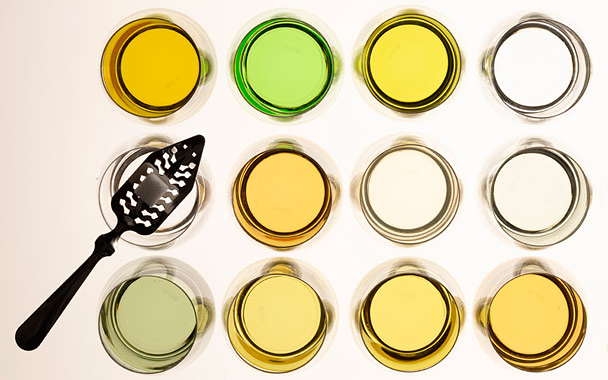The truth about absinthe is compelling enough that the many legends—hallucinations, madness, and infanticide, to name just a few—could safely be ignored. But it’s hard to resist stories of murder, mayhem, and ear amputations. Perhaps that’s why the licorice-flavored spirit has attracted the kind of mythologizing that an aspiring Hollywood starlet can only dream of. Indeed, the “green fairy” has a misinformation quotient at least as high as its alcohol content of 60 to 70 percent. But if you’re looking for the truth, you’ve come to the right place.
Before the scourge of absinthe destroyed the fabric of its society and allowed tiny Luxembourg to colonize it (okay, that part’s not true), mid-19th-century France was a wine-drinking nation. But phylloxera—the pesky little root louse—devastated the country’s vineyards, wine became scarce and expensive, and happy hour began to turn increasingly green. Some distillers who had been using grapes to make their base spirit shifted to less expensive ingredients. Cheap absinthe grew cheaper as wine and brandy became more dear. Poets and painters began killing each other.
Wait, that’s not true, either. I must be under the influence of some mind-altering substance. Perhaps it’s the thujone in the 16 legally available absinthes I recently tasted. After all, thujone, a chemical compound found in one of absinthe’s primary ingredients—the Artemisia absinthium species of wormwood—is the reason it was banned, the reason that Van Gogh and Toulouse-Lautrec painted, the reason that Arthur Rimbaud and Paul Verlaine versified (and slept together), the reason that a Swiss farmer killed his two daughters and pregnant wife.
Except that Van Gogh was apparently addicted to terpenes (thujone is a terpene) and tried to eat paint and drink turpentine. He clearly had other issues. And the murderer consumed massive quantities of wine and brandy in addition to his two glasses of absinthe. Still, if thujone is so toxic, couldn’t it have been a factor? Well, no. It turns out there wasn’t very much of it in those old absinthes. We know this because Ted Breaux, a chemist and absinthe obsessive, ran the tests. A 2006 New Yorker article outlines Breaux’s work in great detail, but it doesn’t mention that Michael Kenyon wrote, in the October 1990 issue of Gourmet, about a pre-ban bottle of Swiss absinthe that he had analyzed at Merck. The lab found “thujone, ether, cyclohexane, camphor, and fenchone.” How much thujone? One part per million. A decade later, Breaux came up with similar numbers. Must be intense stuff to be dangerous at such low levels. Except that in the United States, absinthe is legal if its thujone content is below—wait for it—ten parts per million. None of this seems to diminish the chatter, however. It’s become a matter of faith that the old absinthes had high levels of thujone and that the new “thujone-free” wave is therefore less authentic. One justification for this opinion is that most modern versions are not undrinkably bitter—wormwood is second only to rue in bitterness (third if you count Stone Brewing’s Ruination IPA—oops, must be the thujone talking again). But well-made absinthe is a lot less bitter than, say, an Italian amaro. In fact, only a few in my tasting needed sugar.
So the stuff is as safe as any 136-proof beverage, won’t enhance your creativity, and won’t make you go all Van Gogh on your own ear. But is it any good? I loved Vieux Pontarlier ($65) and Pernod “Aux Plantes d’Absinthe Supérieure” ($70) diluted with ice-cold water; the more herbaceous Kübler ($50), from Switzerland, was good, too, and worked best as a glass rinse for a Sazerac. The biggest surprise was how a few changed color just a day or two after being opened, going from a delicate green to an unappetizing brown. Of course, I could’ve been hallucinating.


